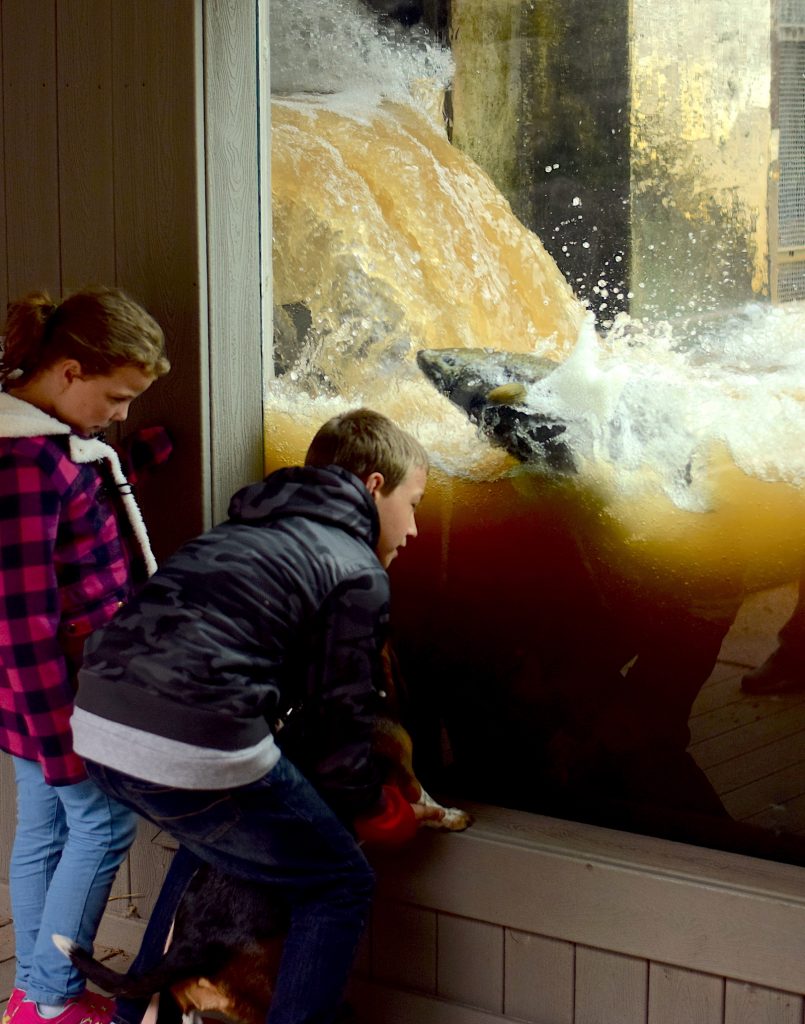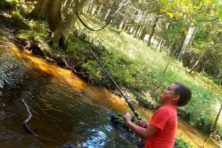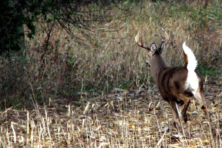Wild Things: Time to Get Sighted In for Youth Gun Deer Hunt
- Share
- Tweet
- Pin
- Share
If you’ll be mentoring someone during this year’s youth gun deer hunt, now’s the time to dial in for a better shot at success.
Cooler air and the first hints of fall color are getting kids and adults excited for the Oct. 9-10 hunt, which offers those age 15 and younger an opportunity to get an early shot at a whitetail, learning under the watchful eye of an experienced mentor. In our area, all properties that are open to gun deer hunting are open for the youth hunt, except state parks.
Scouting, blind or stand placement, and sighting of firearms should all be on your to-do list soon so that you can head into the hunt with confidence.
Both resident and nonresident youths are eligible, and they may hunt deer with a gun, bow or crossbow. The bag limit is one buck with a gun buck deer harvest authorization, plus additional antlerless deer valid for a specific county and land type (public access or private).
Youths participating in this hunt must be mentored by a parent, guardian or other adult who has permission from the hunter’s parent or guardian. For hunters younger than 12 and those who have not yet completed hunter education, the mentor must also be a hunter-education graduate and hold a current hunting license.
An adult may not accompany more than two youth hunters during the youth gun deer hunt at any given time, and those being mentored must be within an arm’s reach at all times. Youths age 11 and younger must have one-to-one mentoring.
Adults accompanying youth hunters may possess a bow, crossbow or gun to hunt for a game species that is open at that time, including deer with a bow or crossbow only.
Mentors are encouraged to discuss the four basic rules of firearm safety with youth prior to hunting:
• Treat every gun as if it were loaded.
• Always point the muzzle in a safe direction.
• Be sure of your target and beyond.
• Keep your finger out of the trigger guard until you’re ready to shoot.
Salmon Run Is On

If you want a shot at a big, spawn-minded Chinook salmon, coho salmon or brown trout, the next few weeks will offer the greatest opportunities.
Monday night’s rain wasn’t exactly a gully washer, but it was enough to lure another wave of fish into Great Lakes tributaries such as Strawberry Creek and the Ahnapee and Kewaunee rivers.
Keep in mind that no fishing is allowed near the mouth of Strawberry Creek or in the creek itself. There’s also a refuge in place below the C.D. “Buzz” Besadny Fisheries Facility on the Kewaunee River. Both Department of Natural Resources (DNR) facilities are great places to go to see salmon, however, and there are already plenty of fish in the refuges.

DNR fisheries biologist Nick Legler said pumps will be turned on at both locations next week. Sorting of Chinooks and cohos at Kewaunee will likely begin by Oct. 2. Sorting was closed to the public due to COVID-19 last year, but viewing will be allowed again this season. Spawning and sorting at Strawberry Creek are expected to be done for about three weeks, every Monday and Thursday, beginning Sept. 30 or Oct. 4.
The public can visit both Strawberry Creek and the Besadny facility during daylight hours. There are two underwater viewing windows at the Kewaunee site, offering a fascinating glimpse at Chinooks, cohos, browns and rainbows.
Plague of Mosquitoes
An often-wet summer means another absolute plague of mosquitoes, and there’s no relief in sight.
Late this week, we’ll have experienced our coldest overnight lows since the spring, but even temperatures in the 40s aren’t enough to freeze out the biting bugs. There’s no frost in the 15-day forecast, either.
Some hunters say they won’t head afield right now without a ThermaCell or similar device. Others play the wind and use sprays with DEET, Permethrin or Picaridin. Finally, some hunt only on the windiest days, or they won’t sit until after a hard frost.




